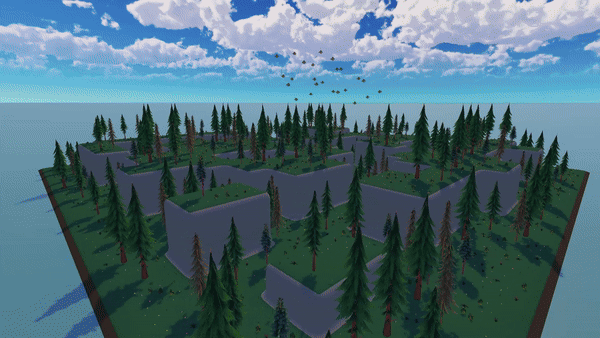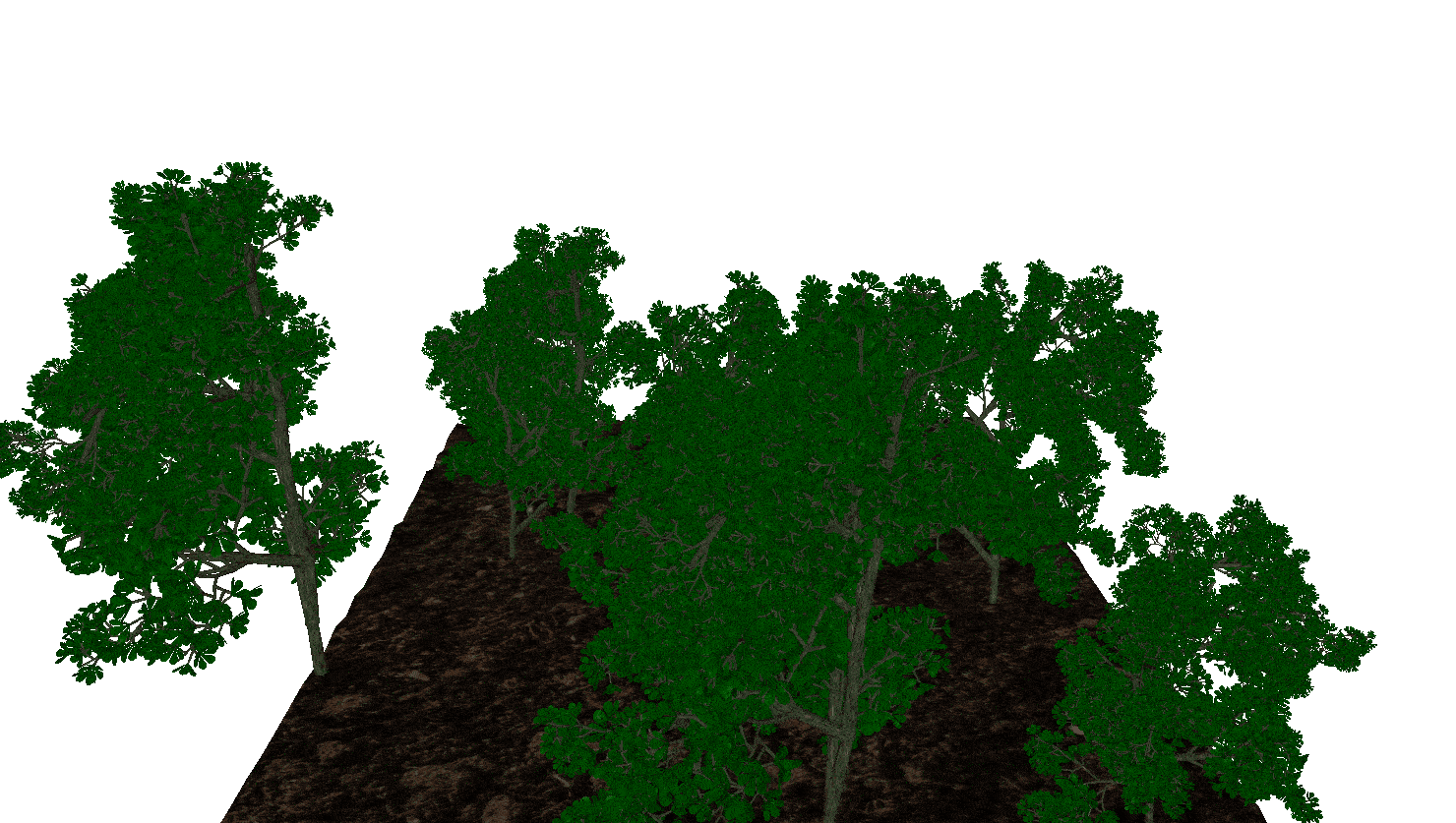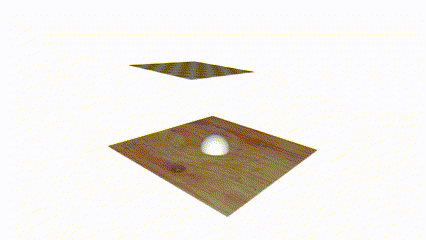Romain Delaplaine
Halfway through my final year of engineering studies, with a specialization in Imaging, Modeling and Computer Science, I'm preparing to enter the exciting video game industry.
My career path has enabled me to develop solid technical expertise, which I'm now putting to good use for my passion.
.jpg)
Professional Project
Here is the professional project page. You will find there projects I have worked on in school or in company.
Procedural world generation
This project is all about procedural generation. For our final school project, we decided as a team of three to create a 3D world procedurally using Unity and C#.
More precisely, we tackled three key aspects: terrain generation, vegetation generation, and flock simulation.
My role in this project was to implement the terrain generation part. In order to do this, I chose to use the wave function collapse that enabled us to get the following result.This method is a generation technic most known originally for texture generation, the key point in its implementation is the adjency constraint. I also integrated all parts together for the final demonstration.


AR-Jobcard
AR-Jobcard, developed at Fraunhofer IPK, provides step-by-step guides connected to the Product Lifecycle Management (PLM) system for comprehensive product tracking.
My role included integrating features such as hand gesture controls or screenshot capture and editing. The integration with the PLM system was also a key focus. Finally, I took charge of integrating new user interfaces designed by my colleague, providing an intuitive and visually engaging experience.
Learning how to use Unity and getting the hang of AR development was tricky at first. I tackled this by doing a lot of research on my own and also doing a side project with Unity. This helped me solve problems and come up with creative solutions.
ENVAR
ENVAR is another project I have worked on at Fraunhofer. It is a virtual reality (VR) application designed to enable the review process of JT files, offering both solo and collaborative experiences.
In this project, my primary focus was on enhancing the user interface by implementing various menus to streamline navigation. Additionally, I took charge of maintaining the correct functionality of vital features such as a cut view tool and the management of the 3D model library.
Throughout ENVAR project and AR-Jobcar project, I achieved significant milestones in both technical and professional growth. I rapidly acquired proficiency in Unity, and honed my skills in C#, a powerful programming language pivotal to Unity application development.


Sufod
Sufod is an exploration game with a grid-based structure implemented in C++. It was a class project where the goal was to discover and understand graph theory principles.
In collaboration with a fellow enthusiast, I took charge of crucial aspects of the project. I was responsible for developing and managing procedural map generation, as well as implementing character class management.
Working on Sufod proved to be an enriching experience. I learned about the concepts of graph theory, and also gained practical exposure to path-finding algorithms, Breadth-First Search, and Depth-First Search. The implementation of procedural map generation stands as a testament to my ability to apply theoretical knowledge in a practical context.
L-system
In this school project, the objective was to generate procedural tree structures using the L-system method. We worked in pairs on it, and my responsibilities included integrating the L-system method and developing corresponding algorithms. I also focused on rendering the trees based on the system model and generating procedural terrain using Perlin noise.
The primary challenge was transitioning from a 2D structure to a 3D one. To address this, we initially constructed a 2D version as a foundation. Then, through iterative testing and adjustments, we successfully translated it into a dynamic 3D representation.
This project was implemented in C++, using the OpenGL framework for rendering our dynamic 3D scene.


Cloth simulation
The goal of this project was to implement a model of cloth simulation based on spring approach
In the Cloth Simulation project, I took on the role of implementing a realistic cloth simulation using the numerical Euler method. This involved crafting a dynamic computational model that could accurately capture the intricate behaviors of virtual fabric in response to various forces and constraints.
I had to manage constraints within the simulation, addressing issues such as collisions and preventing unrealistic deformations. Handling external forces, such as wind.
This project was implemented in C++, using the OpenGL framework for rendering our dynamic 3D scene.